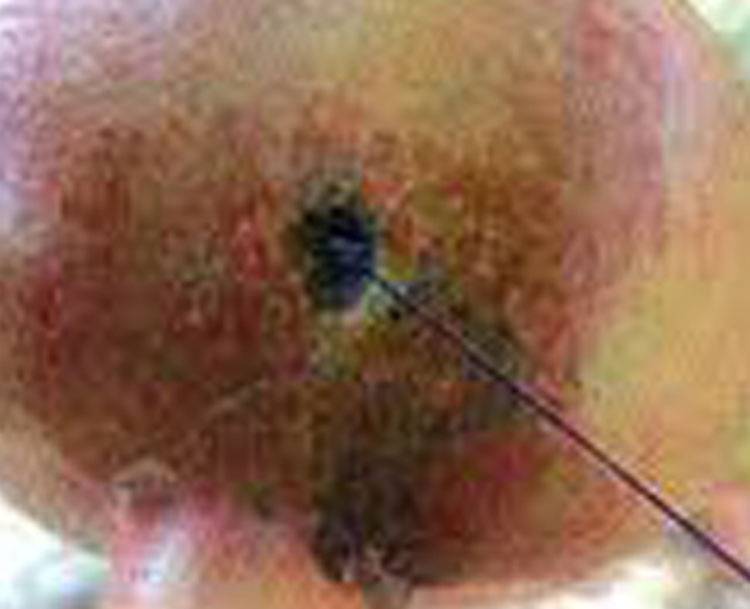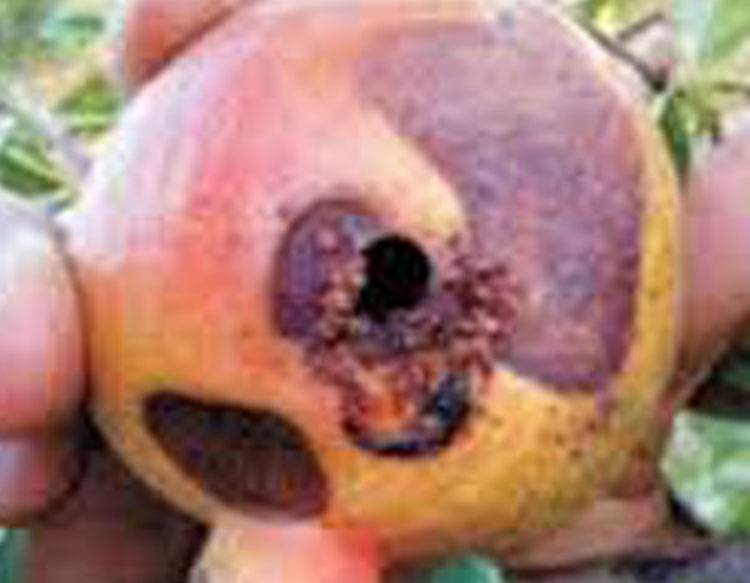Pomegranate
Pomegranate fruit borer

Pomegranate fruit borer
Deudorix (Virachola) isocrates

Pomegranate fruit borer
Deudorix (Virachola) isocrates

Pomegranate fruit borer
Deudorix (Virachola) isocrates
Pomegranate Fruit Borer: A Major Threat to Pomegranate Cultivation
Pomegranate fruit borers are serious pests affecting pomegranate and other fruit crops in India and worldwide. Two major species are observed in India:
- Deudorix (Virachola) isocrates Fab.
- Deudorix epijarbas Moore
These pests cause significant economic losses by damaging fruits, leading to fruit rot and drop, reducing market value.
1. Deudorix (Virachola) isocrates Fab.
Symptoms of Infestation
- Female butterflies lay eggs on tender leaves.
- Larvae bore into fruits and feed on the internal pulp and seeds.
- Infested fruits emit a foul smell and show larval excreta near bore holes.
- Severe infestations can cause fruit rot and rejection.
Distribution
- Found across Asia, including India, Iran, Spain, Afghanistan, Pakistan, Iraq, and Mediterranean countries.
Hosts of Commercial Importance
- Primary host: Pomegranate (Punica granatum).
- Other hosts: Guava, tamarind, apple, annona, ber, litchi, mulberry, peach, plum, citrus, and wood apple.
Damage and Economic Impact
- Up to 50% fruit loss in severe cases.
- Total damage reported: 40-90% in India (Bose, 1985; Ramkrishna Ayyar, 1984).
- Causes fruit rot, premature dropping, and market rejection.
Seasonal Incidence
- Peak infestation occurs between April and August in India.
2. Deudorix epijarbas Moore
Distribution
- Found in East Asia, including India, the Philippines, and Fiji.
- In India, it is a major pest in Jammu & Kashmir and Himachal Pradesh.
Hosts of Commercial Importance
- Pomegranate, apple, litchi, and citrus.
Identification and Biology
- Females: Dull brown, about 22.97 mm in size, with a lifespan of 13.20 days.
- Males: Brick red, about 18.54 mm long, with a lifespan of 9.20 days.
- Life cycle starts in October and ends around May-June.
Mode of Feeding and Symptoms
- Larvae bore into developing fruits, feeding on pulp and seeds.
- Boreholes allow secondary fungal and bacterial infections, leading to fruit rot.
- Infested fruits show excreta near holes, and fully mature fruits get damaged.
Climate Preferences of Anar Butterfly (Pomegranate Butterfly)
- Optimal Temperature: 20-35°C
- Humidity Preference: 70-80% (important for egg development and survival).
- Impact of Climate:
- Warm and moist conditions favor population growth.
- High humidity supports egg hatching and larval development.
Conclusion
The pomegranate fruit borers are major pests that require proper monitoring and management. Preventing infestations through timely interventions can help reduce losses and improve fruit quality.
Source: North Bengal Agricultural University, Plant Village, Vikaspedia